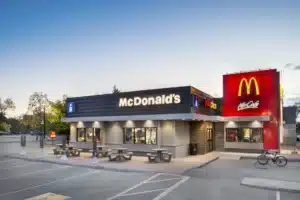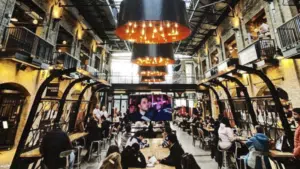Elevating the Dining Experience: The Essential Role of Building Automation Systems in Restaurants

In the competitive world of gastronomy, restaurant owners and managers are constantly seeking ways to refine the dining experience, enhance operational efficiency, and boost profit margins. Amidst various strategies to achieve these goals, the integration of a Building Automation System (BAS) emerges as a pivotal solution, revolutionizing how restaurants operate and serve their customers. Let’s explore the multifaceted advantages of implementing a BAS in restaurants, demonstrating its critical role in creating the perfect dining ambiance and streamlining operations.
Restaurants Where Tri-Star Has Installed BAS Systems
Mcdonald's On Grant And Moray
Brazen Hall On Pembina Hwy

The Velvet Glove Inside Fairmont Hotel
How BAS Crafts the Perfect Dining Atmosphere
The ambiance of a restaurant plays a crucial role in shaping the dining experience and influencing customer satisfaction. A BAS offers unprecedented control over lighting, temperature, and background music, elements fundamental to creating an inviting atmosphere.
Picture a scenario where, as the sun begins to set, the lighting automatically shifts to complement the evening's ambiance, the temperature adjusts for the comfort of the guests, and the background music sets the perfect mood. This level of precision not only enhances the dining experience but also encourages repeat business, with customers returning for a unique and comfortable environment.
Improving Operational Efficiencies and Energy Management With BAS
One of the standout benefits of a Building Automation System (BAS) is its ability to significantly reduce utility costs by optimizing HVAC and lighting usage based on real-time needs and occupancy. For instance, a restaurant can minimize energy consumption during off-peak hours while ensuring optimal comfort during busy periods. This can be exemplified by adjusting outside air intake based on the number of people in the building. At times of low occupancy, this strategy can result in substantial cost savings, especially when outside air temperatures are below freezing or above the normal room temperature setpoints. Other factors, such as sunlight entering through windows or temperature fluctuations near outside doors, can all be effectively managed with a BAS programmed and installed by Tri-Star Automation. The result is a vastly improved dining experience, leading to repeat customers, fewer complaints, and an improved bottom line.
How BAS Ensures Food Safety and Compliance
Kitchens and storage areas are the heart of any restaurant, and maintaining consistent temperature and humidity levels in these spaces is critical for food safety and compliance with health regulations. A BAS enables precise monitoring and control of these environmental conditions, preventing food spoilage and ensuring that the establishment meets stringent health standards. Moreover, the remote monitoring capabilities provided by a BAS allow restaurant managers to oversee and adjust settings from anywhere, offering operational continuity and peace of mind.
Beyond Comfort: Enhancing Customer Experience Through Building Automation
A BAS extends its benefits beyond merely creating a comfortable environment; it also supports energy sustainability efforts. This capability not only improves customer service but also serves as a compelling marketing point for the growing number of environmentally conscious consumers. Demonstrating a commitment to sustainability through efficient energy use can differentiate a restaurant in a competitive market, appealing to diners who value environmental responsibility.
Dispelling Myths: BAS Accessibility and Cost-Effectiveness
Concerns about the complexity and cost of installing and maintaining a BAS can deter restaurant owners from adopting this technology. However, modern systems are designed to be scalable and customizable, catering to the specific needs and budgets of any establishment, whether it’s a cozy bistro or a sprawling eatery. The long-term savings in utility costs, along with the added value to the business through enhanced customer satisfaction and operational efficiencies, underscore the investment's worth.
In Conclusion
Integrating a Building Automation System into a restaurant's operations offers a comprehensive solution to enhance the dining atmosphere, reduce operational costs, ensure food safety, and support sustainability efforts. By dispelling concerns about complexity and cost, restaurant owners can appreciate the long-term benefits and return on investment that a BAS provides.
With the expertise and support of Tri-Star Automation, restaurants can navigate the integration process smoothly, ensuring they are equipped with a tailored system that promotes superior dining experiences, operational excellence, and a healthier bottom line.
Investing in a building automation system, manufactured by our partners at Reliable Controls, with Tri-Star Automation responsible for system design, installation, programming, commissioning, staff training, and remote monitoring, is not just an operational decision—it's a strategic move toward maximizing the long-term profits of your restaurant in an ever-evolving industry.



